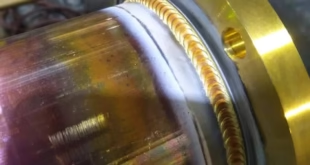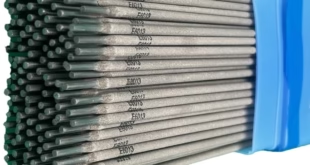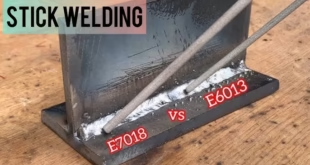Introduction
Welding is a common industrial process that involves joining two or more materials to form a single piece. One of the most important considerations in welding is the selection of materials. Welding can be performed on a variety of materials, but they can be broadly classified into two categories based on their composition: ferrous and non-ferrous materials.
Ferrous materials are those that contain iron, such as carbon steel, stainless steel, and cast iron. These materials are widely used in various industries due to their strength, durability, and ability to withstand high temperatures. However, they are also susceptible to corrosion, which can reduce their lifespan.
On the other hand, non-ferrous materials are those that do not contain iron, such as aluminum, copper, and titanium. These materials have several advantages over ferrous materials, such as being lightweight, corrosion-resistant, and having a higher conductivity. However, they can be more expensive and may require different welding techniques compared to ferrous materials.
In this context, it is essential to understand the differences between ferrous and non-ferrous materials when selecting the appropriate welding technique for a particular project. This knowledge can help ensure that the final product is strong, durable, and meets the required specifications.

Ferrous Materials
Definition and explanation of ferrous materials
Ferrous materials are a group of metals that contain iron as the primary element. They are widely used in welding due to their strength, durability, and ability to be easily manipulated. Ferrous materials are commonly used in the construction of buildings, bridges, and other infrastructure projects.
Different types of ferrous materials, including:
- Carbon steels – These are the most commonly used ferrous materials in welding. They are highly versatile and can be easily manipulated to meet specific project requirements. Carbon steels contain varying amounts of carbon, which can affect their properties such as strength and hardness.
- Alloy steels – These are a type of carbon steel that contains additional elements such as nickel, chromium, and molybdenum. These additional elements can improve the strength and durability of the steel, making it more suitable for use in specific applications.
- Cast iron – This is a type of iron that contains more than 2% carbon, making it brittle and difficult to weld. However, cast iron is highly resistant to wear and is commonly used in the production of engine blocks, gears, and other industrial components.
Properties and Advantages
Ferrous materials have several properties that make them suitable for welding applications. For example, they have excellent mechanical properties such as strength and toughness, making them ideal for use in structural applications. Ferrous materials also have good thermal conductivity, which is important in welding since heat is required to melt and fuse the metals.
Ferrous materials have several advantages over non-ferrous materials. For instance, they are readily available, making them easy to source and manufacture. Ferrous materials are also more durable and can withstand high temperatures and pressure. Additionally, they are relatively affordable compared to non-ferrous materials.
Disadvantages
One of the significant disadvantages of ferrous materials is their susceptibility to corrosion. Ferrous materials are prone to rusting, which can weaken the metal and cause it to fail prematurely. Another disadvantage is their high carbon content, which can lead to brittleness and cracking when welding. Ferrous materials are also generally heavier than non-ferrous materials, making them less suitable for applications where weight is a critical factor.
Corrosion Susceptibility
As mentioned earlier, corrosion susceptibility is one of the significant disadvantages of ferrous materials. Corrosion is a chemical process that occurs when the metal reacts with its environment, causing it to weaken and deteriorate over time. This can be particularly problematic in applications where the metal is exposed to harsh environments such as saltwater, acids, or alkalis.
To mitigate the risk of corrosion, various corrosion-resistant coatings and treatments can be applied to ferrous materials. For example, galvanization involves coating the metal with a layer of zinc, which acts as a sacrificial anode to prevent corrosion. Stainless steel, which contains chromium and nickel, is also highly resistant to corrosion and is commonly used in applications where hygiene and sanitation are critical.
Non-Ferrous Materials
Definition and explanation of non-ferrous materials
Non-ferrous materials are metals that do not contain iron as the primary element. They are used in welding applications for their unique properties, such as their resistance to corrosion, high conductivity, and low density. Non-ferrous materials are commonly used in the construction of aircraft, automobiles, and electronics.
Different types of non-ferrous materials, including:
- Aluminum – This is one of the most commonly used non-ferrous materials in welding. It is lightweight, highly conductive, and resistant to corrosion, making it suitable for use in a wide range of applications.
- Copper – This metal is highly conductive and is often used in electrical wiring and other applications that require high conductivity. Copper is also resistant to corrosion and has a high melting point, making it suitable for use in high-temperature applications.
- Nickel – This metal is highly resistant to corrosion and is often used in applications where exposure to harsh environments is expected. It is also highly conductive and is used in a variety of electrical applications.
Properties and Advantages
Non-ferrous materials have several properties that make them suitable for welding applications. For example, they are generally lighter in weight compared to ferrous materials, making them more suitable for applications where weight is a critical factor. Non-ferrous materials also have excellent corrosion resistance, making them ideal for use in applications where the metal is exposed to harsh environments such as saltwater, acids, or alkalis.
Non-ferrous materials have several advantages over ferrous materials. For instance, they have excellent electrical conductivity, making them ideal for use in electrical and electronic applications. Non-ferrous materials are also more ductile, making them less prone to cracking and easier to form into complex shapes. Additionally, they are less susceptible to magnetization, making them suitable for applications where magnetic fields can interfere with their performance.
Disadvantages
One of the significant disadvantages of non-ferrous materials is their relatively high cost compared to ferrous materials. Non-ferrous materials are generally more expensive to produce and manufacture, which can drive up the cost of the final product. Another disadvantage is their lower melting point compared to ferrous materials, which can make them more challenging to weld.
Cost Considerations
Non-ferrous materials are generally more expensive than ferrous materials, which can impact the cost of the final product. However, the higher cost may be offset by the benefits that non-ferrous materials offer, such as their corrosion resistance, ductility, and electrical conductivity. Additionally, the cost of non-ferrous materials can vary depending on factors such as availability, purity, and the complexity of the manufacturing process.
Different Welding Techniques
Non-ferrous materials require different welding techniques compared to ferrous materials due to their lower melting point and different properties. For example, TIG (tungsten inert gas) welding is a popular choice for welding aluminum and copper due to its precision and ability to produce high-quality welds. MIG (metal inert gas) welding is also commonly used for welding non-ferrous materials due to its ease of use and ability to weld thicker materials.
Non-ferrous materials offer several advantages over ferrous materials, such as their lighter weight, corrosion resistance, and electrical conductivity. However, they also have some disadvantages, such as their higher cost and lower melting point. Different welding techniques are required for non-ferrous materials due to their different properties, and it is essential to choose the right welding technique for the specific material and application.
Composites
Definition and explanation of composites
Composites are materials made from two or more different types of materials that are combined to create a new material with unique properties. They are used in welding applications for their ability to offer a combination of properties from different materials, such as high strength, low weight, and resistance to corrosion. Composites are commonly used in aerospace, automotive, and construction industries.
Different types of composites, including:
- Fiber-reinforced composites – These composites are made by combining fibers, such as carbon or glass, with a polymer resin. The fibers provide strength and stiffness, while the polymer resin holds the fibers together and protects them from damage.
- Metal-matrix composites – These composites are made by combining a metal with a reinforcing material, such as ceramic or carbon fibers. The reinforcing material provides added strength and stiffness, while the metal matrix provides toughness and ductility.
- Ceramic-matrix composites – These composites are made by combining a ceramic material with a reinforcing material, such as ceramic fibers. The ceramic matrix provides high-temperature resistance and stiffness, while the reinforcing material provides added strength.
Characteristics and properties of composites
Composites have a number of unique properties that make them desirable for use in welding applications. They offer a combination of properties from different materials, making them highly versatile and suitable for a wide range of applications. Composites are also lightweight, which can reduce the weight of a final product and improve its overall performance. Additionally, composites are highly resistant to corrosion and can withstand high temperatures, making them suitable for use in harsh environments.
Welding processes used for composite materials
Welding processes used for composite materials vary depending on the specific material and the intended application. Some common welding processes used for composite materials include:
- Fusion welding: This process involves melting the matrix material and fusing the composite layers together. This process is commonly used for thermoplastic matrix composites.
- Diffusion bonding: This process involves heating the composite material under pressure to cause the matrix material to flow and bond the composite layers together. This process is commonly used for metal matrix composites.
- Friction stir welding: This process involves using a rotating tool to stir and join the composite layers together. This process is commonly used for thermoset matrix composites.
Welding techniques and procedures for composite materials
Welding techniques and procedures for composite materials also vary depending on the specific material and the intended application. Some common techniques and procedures include:
- Preheating and post-weld heat treatment: These processes are used to control the thermal properties of the composite material during welding and to prevent warping or distortion.
- Adhesive bonding: This technique involves using an adhesive to bond the composite layers together. This technique is commonly used for fiber-reinforced composites.
However, composites also have some limitations. They can be more difficult to weld than traditional materials due to their complex structures and properties. Welders must carefully select the appropriate welding techniques and equipment to ensure a strong and reliable weld. Additionally, composites can be more expensive than traditional materials, which can impact the overall cost of a welding project.
Welding defects and challenges for composite materials can be more complex than for traditional materials due to the heterogeneous nature of composites. Common welding defects for composite materials include porosity, voids, and delamination. To avoid these defects, it is important to carefully select the welding process, technique, and parameters for the specific composite material being used.
Considerations in Material Selection for Welding
One of the most critical considerations when selecting materials for welding is the application and environment in which the final product will be used. For example, if the product will be exposed to harsh environmental conditions such as extreme temperatures, corrosion, or abrasion, then materials that offer high resistance to these factors should be selected. Similarly, the material should be chosen based on the expected load or stress that it will be subjected to during use.
The required properties of the final product are also essential considerations when selecting materials for welding. For example, if the product needs to be lightweight, then materials such as aluminum or titanium may be a better choice than steel. Similarly, if the product requires high electrical conductivity, then materials such as copper or brass may be preferable.
Another critical consideration when selecting materials for welding is the welding procedures and safety measures that will be required. Different materials require different welding techniques, and the choice of material may influence the welding method used. For example, some materials may require specialized welding techniques, such as TIG or MIG welding, which may be more time-consuming or expensive. Safety is also a crucial consideration when selecting materials for welding. Some materials, such as lead or asbestos-containing materials, may pose health risks to the welder and other workers. It is essential to follow all safety protocols and guidelines when working with these materials, including wearing appropriate personal protective equipment, such as gloves, masks, and protective clothing.
Selection the right materials for welding requires careful consideration of several factors, including the application and environment, required properties of the final product, and welding procedures and safety measures. By taking these factors into account, the welder can select materials that will produce a high-quality and safe final product.
FAQs
Can non-ferrous metals be welded?
Yes, non-ferrous metals can be welded using various welding techniques such as TIG (tungsten inert gas) welding, MIG (metal inert gas) welding, and laser welding.
Which welding is suitable for ferrous?
Ferrous metals such as carbon steel, stainless steel, and cast iron are suitable for welding using various welding techniques such as shielded metal arc welding (SMAW), gas metal arc welding (GMAW), and gas tungsten arc welding (GTAW).
Can you weld ferrous metals?
Yes, ferrous metals can be welded using the appropriate welding techniques.
What is ferrous in welding?
In welding, ferrous metals are metals that contain iron, such as carbon steel, stainless steel, and cast iron.
What is non-ferrous in welding?
Non-ferrous metals are metals that do not contain iron, such as aluminum, copper, brass, and titanium.
Which welding is used for non-ferrous metals?
TIG welding is commonly used for non-ferrous metals, especially aluminum and magnesium, due to its precise control and low heat input.
Which material Cannot be welded?
Some materials that cannot be welded include certain types of plastics, ceramics, and some non-metallic materials.
Why are non ferrous metals used in the welding field?
Non-ferrous metals are often used in welding because they have good corrosion resistance, good electrical and thermal conductivity, and are lightweight. Additionally, non-ferrous metals do not rust or corrode as easily as ferrous metals, making them ideal for welding applications.
Which steel is not weldable?
Some types of steel, such as free-machining steel, cannot be welded due to their high sulfur content, which can cause porosity in the weld. Additionally, some high-alloy steels and tool steels can also be difficult to weld.
Conclusion
In conclusion, the selection of materials is a critical aspect of welding, and it is important to understand the differences between ferrous and non-ferrous materials. While ferrous materials such as carbon steel, stainless steel, and cast iron are known for their strength and durability, non-ferrous materials such as aluminum, copper, and titanium offer advantages such as corrosion-resistance, lightweight, and high conductivity.
When selecting materials for welding, it is important to consider factors such as the application, environment, and required properties of the final product. The choice of welding technique may also depend on the type of material being used, and it is crucial to follow proper welding procedures to ensure the integrity and safety of the finished product.
Overall, a thorough understanding of ferrous and non-ferrous materials in welding can help ensure that the final product meets the required specifications and performs well over its intended lifespan.
 Welding of Welders All about Welding and Welders
Welding of Welders All about Welding and Welders



